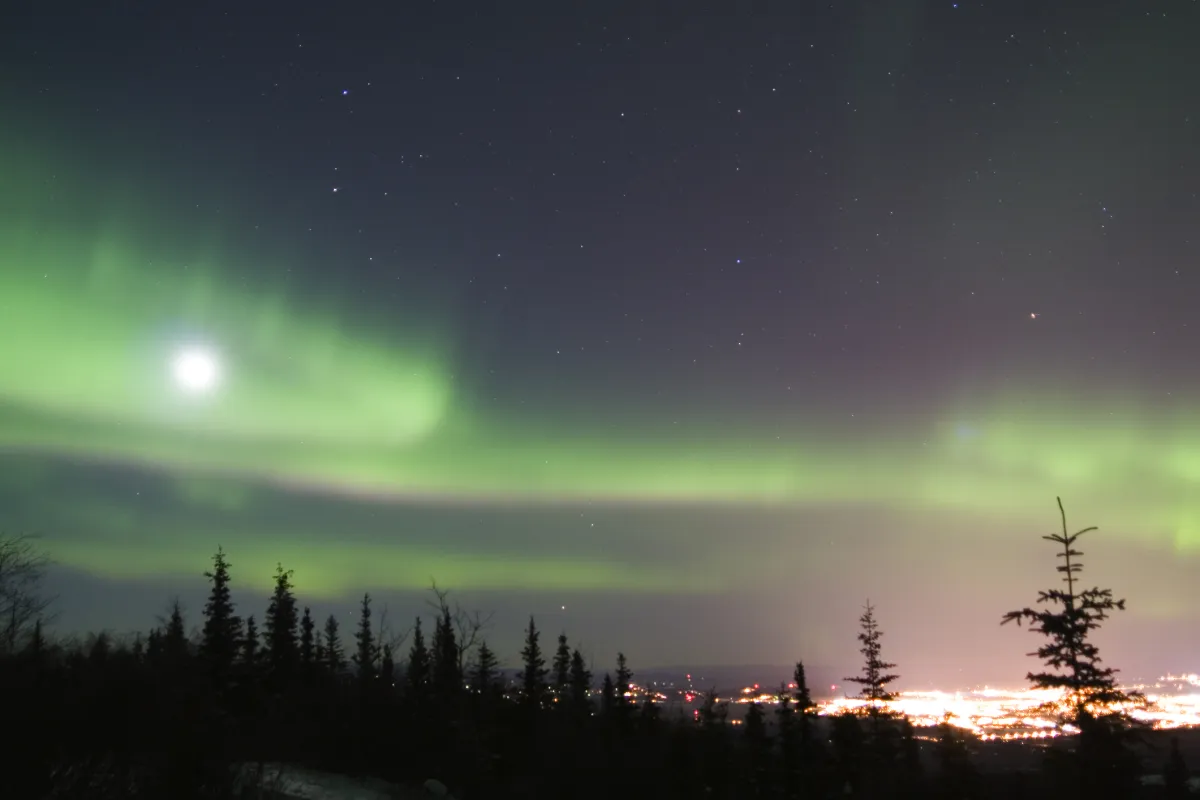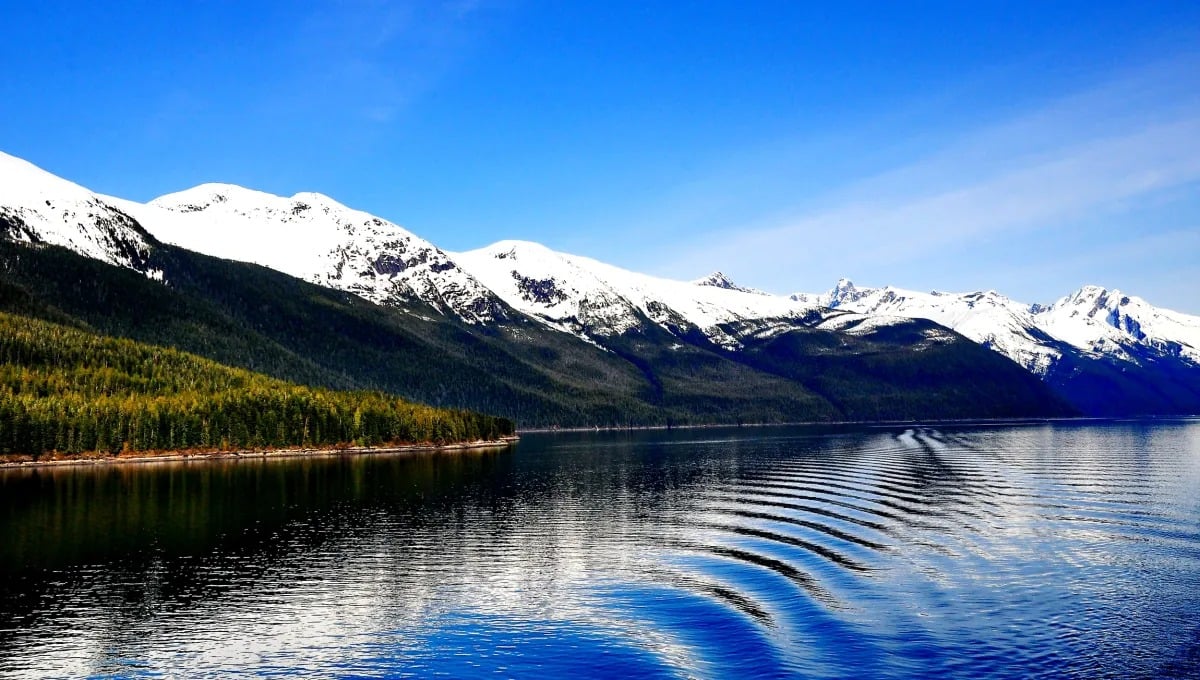
Every winter, thousands of visitors flock to interior Alaska to witness the sky come alive. The Northern Lights, or Aurora Borealis, is one of the most spectacular natural phenomena on Earth, but is only visible at extremely northern latitudes. Much of Alaska falls within the realm that can see the lights, but some areas give you much better odds of catching Lady Aurora in all of her glory.
In this guide, I will run through top tips for how you can catch the Northern Lights on your Alaskan adventure. I’ll cover everything from what these spectacular lights are, where and how to see them, and tips for making your evening enjoyable. So pack your camera and grab some extra layers, as we embark on a nighttime expedition across the Alaskan tundra.
A Brief Introduction to the Aurora Borealis
The Northern Lights are a natural wonder that has fascinated humans for centuries. These spectacular lights are the result when charged solar particles from the sun interact with the Earth's magnetic field. The sun constantly releases charged particles into space, and when these particles collide with the Earth's magnetic field, they create a disturbance – leading to our incredible light show.
Also known as the Aurora Borealis, the Northern Lights are visible in many parts of the world, but they are most commonly seen in the far northern hemisphere on clear night skies. The colors you see are determined by the types of gas particles that are colliding with the charged particles. For example, oxygen produces green and yellow colors, while nitrogen produces blue and red colors. Depending on the intensity of the solar disturbance, these colors can appear near invisible or incredibly vibrant.
The Aurora Borealis has inspired countless myths and legends throughout history. In many cultures, the Northern Lights were seen as a sign of good luck or a message from the gods. Some believed that the Northern Lights were the spirits of the dead, while others believed that they were a gateway to the afterlife.
Today, the Northern Lights remain a source of wonder and awe for people all over the world, and they continue to draw visitors to Alaska for a chance to witness their beauty firsthand.
Best Time of Year to See the Northern Lights in Alaska
While the Northern Lights occur year round, they are only visible when the skies are dark enough to view them. In the summer, Alaska becomes the land of the Midnight Sun, and true darkness is limited to only a few hours in the south to nonexistent in the north.
If you’re looking to see the Northern Lights on your Alaskan trip, plan to visit Alaska during the winter months, from September to April, when the nights are longer and darker. If you aren’t afraid of the cold, plan your trip between December to March, when the weather dips below zero and the sky is the clearest. Clear skies and solar activity are the key ingredients to viewing the lights.
It is important to remember that the lights are a natural phenomenon and cannot be guaranteed. However, by visiting Alaska during the winter months and planning to spend a few nights waiting for clear weather and activity, you can dramatically increase your chances.
Best Place to See the Northern Lights in Alaska
Alaska is one of the best places in the world to see the Northern Lights, thanks to its remote location, minimal light pollution, and clear skies. While the lights can be visible in most of the state during a large solar storm, these storms can be uncommon. To increase your chances of seeing the lights, check out these top spots that offer the highest probability of light viewing:
Fairbanks: Fairbanks is often considered the best place in Alaska to see the Northern Lights, as it is located directly under the "Aurora Oval," an area with the highest probability of auroral activity.
With numerous lodging options available and an extensive road system that leads out of town, Fairbanks offers you the chance to try and see the lights on your own. Local hotels also offer an “Aurora Call”, where they will alert you if the lights become visible in the night. The best guarantee is to opt for a Northern Lights tour. I’ll cover Fairbanks tours more extensively in the next section.
Anchorage: While not as far north as Fairbanks, Anchorage still offers excellent opportunities to see the Northern Lights, especially during larger solar storms.
The largest city in Alaska, you will need to travel outside of the city to see the lights without any light pollution, but there are a few places in town that you can still enjoy. If you’re in Anchorage, pop over to Point Woronzof, right by the Anchorage airport, to catch sight of the lights over the Cook Inlet.
Denali National Park: Denali is one of the most popular tourist destinations in Alaska, and it's also a great place to see the Northern Lights! The park's remote location and dark skies make it an ideal location for stargazing and aurora watching. You can choose to camp or stay in a nearby cabin. Just be sure to set your alarm so you can get up to see them!
Chena Hot Springs: Chena Hot Springs is a popular resort about 40 minutes outside of Fairbanks that offers aurora viewing from the luxury of its outdoor hot springs. The resort also has a dedicated aurora viewing area, complete with heated cabins and hot drinks. This is a great option for couples, as the outdoor springs are adult-only.
Best Chances of Seeing the Lights: Taking a Northern Lights Tour
The Aurora Borealis is not easy to see. With frequent cloud coverage and snowy driving conditions, you can dramatically increase your chances of seeing the lights by opting to take a Northern Lights tour out of Fairbanks.
These tours are dedicated to providing you the best view of the lights. Passengers hop in a bus or van and are driven to remote locations by experienced winter drivers and tour guides. The tours also keep up with best locations that are out of the clouds and provide the best foreground for photography. This takes the guesswork out of your planning and allows you to enjoy your aurora experience without stressing.
While there are many tour options, here is quick rundown of the main types of Northern Lights tours available:
Aurora Viewing Tours: These tours are designed specifically for viewing the Northern Lights. They typically take place in remote locations outside of the city, where there is little light pollution and the Aurora is at its most visible. Some tours may involve riding on snowmobiles or hiking to reach the best viewing spots.
Arctic Circle Tours: These tours take you on a journey into the Arctic Circle, which is a region located above 66 degrees latitude. This tour includes a stop at the Trans-Alaska Pipeline, hot drinks and snacks, and a chance to see the Northern Lights as they dance across the night sky.
Dog Sledding Tours: These tours offer a unique way to experience the Northern Lights while gliding through the snow on a dog sled. Some tours may also include a visit to a sled dog kennel, where you can learn about the dogs and the sport of dog mushing.
Snowmobiling Tours: Snowmobiling tours allow you to explore the Alaskan wilderness and search for the Northern Lights on a snowmobile. These tours are typically led by experienced guides who know the best locations for viewing the Aurora.
Combination Tours: Some tour companies offer combination tours that include a variety of activities such as aurora viewing, dog sledding, snowmobiling, and other winter activities. These tours may be a good option if you want to experience multiple activities in one trip.
How to Prepare for Your Northern Lights Tour
Regardless of which type of tour you choose, it is important to be prepared for the Alaskan night. You will need to be dressed warmly enough to withstand a few hours outside in temperatures that can be as extreme as negative 50 below. Many tour operators will offer warm outer layers and boots, but prepare yourself by wearing extra base layers of fleece or wool.
Also be sure to pack snacks if you have any dietary restrictions. Most tour operators will offer snacks and warm drinks, but it doesn’t hurt to bring your own.
If you are going solo and skipping a tour, do some extra preparation by:
- Conduct extensive research on where you will be driving
- Get updated road reports from local public services
- Bring extra layers in case you have any car issues
- Tell someone local about where you plan on going and when you will be back
- Bring plenty of snacks and water
- Pack an emergency beacon device, such as a Garmin inReach – much of Alaska is outside of cell range, so do not depend on your cell service to communicate or navigate
- Do not go out on your own if you are uncomfortable driving in extreme winter conditions
If you plan on photographing the lights, be sure to bring a camera that can capture it. Many cellphones are not equipped with cameras that can fully capture the lights, so you may need to bring a separate camera that has a wide enough aperture. If you don’t have a camera or are unsure of how to take photos of the lights, opt to take a tour so you can have professional photos of your trip.
Witnessing the Beauty of the Northern Lights in Alaska
Witnessing the Northern Lights is one of the most breathtaking experiences you can have when visiting Alaska. Whether you're an avid photographer or simply looking for a unique and unforgettable adventure, Alaska provides an optimal experience for seeing the aurora.
With great tour options and a variety of excellent backdrops, your evening under the lights will sure to amaze. So pack your camera, grab your layers, and prepare for a spectacular night!

